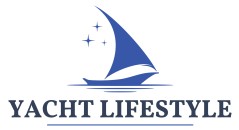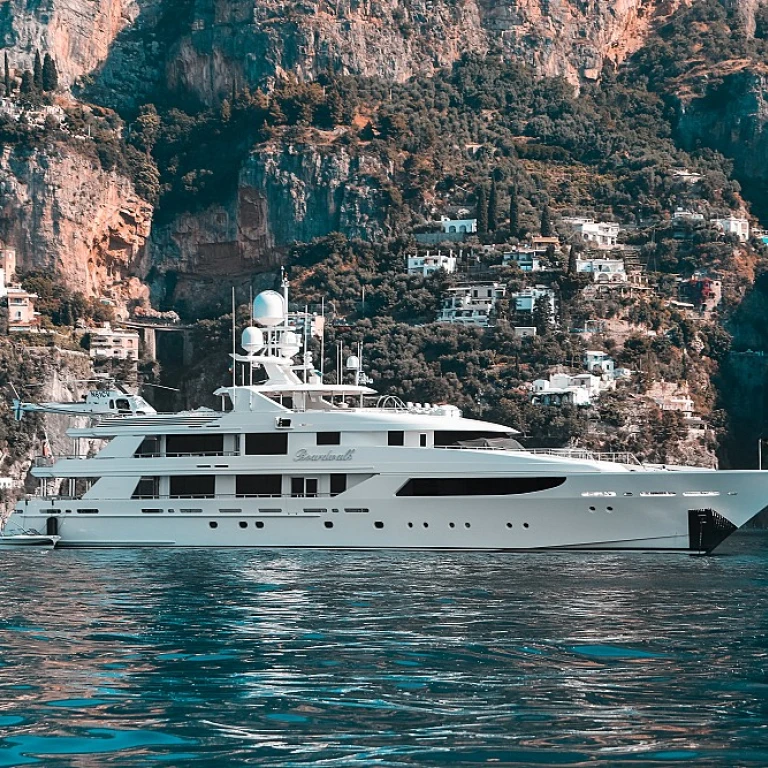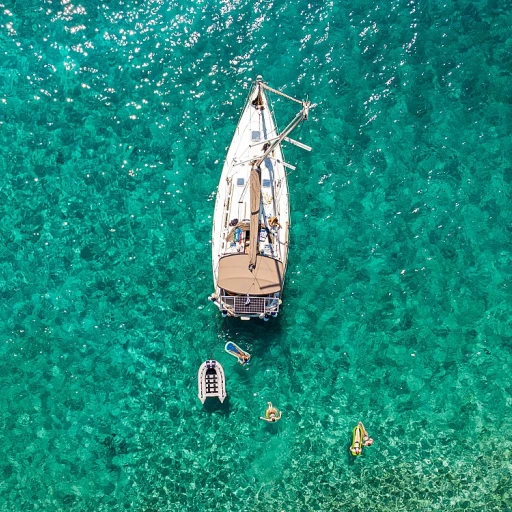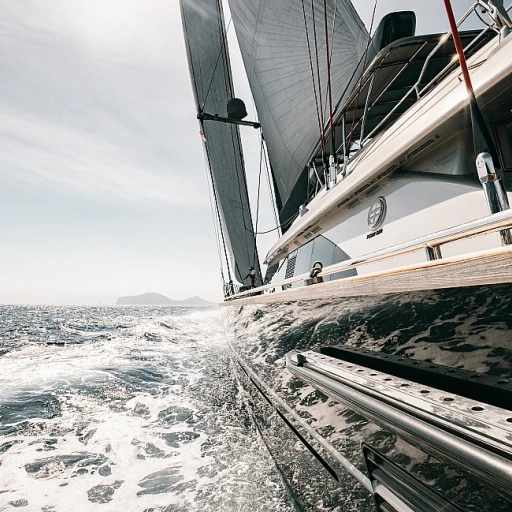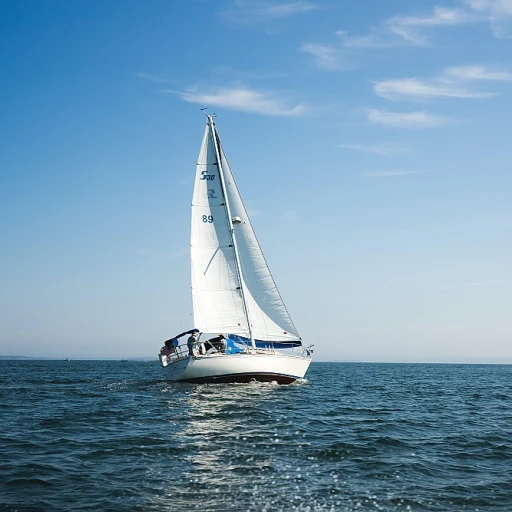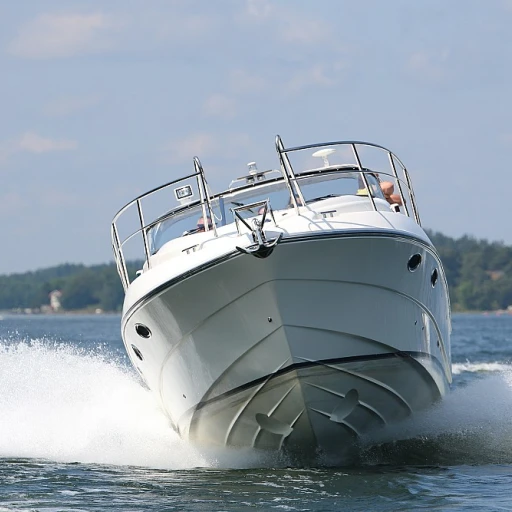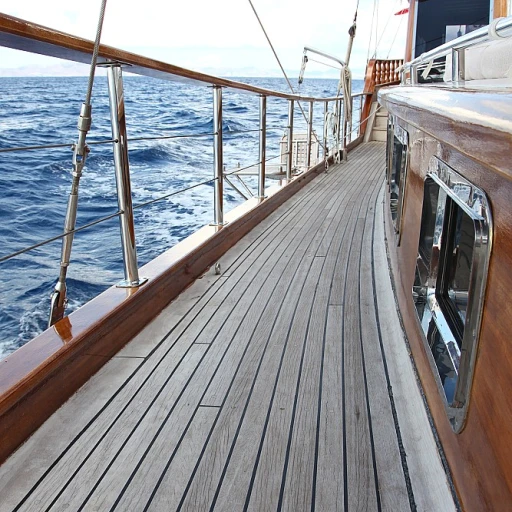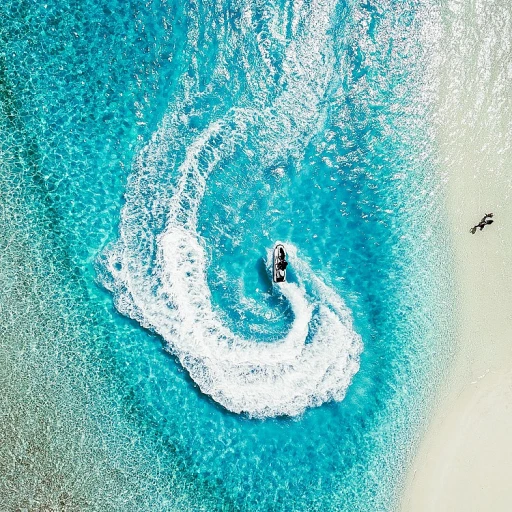-large-teaser.webp)
Understanding the Basics of Sailboat Lines
The Essentials of Sailboat Lines
When it comes to sailing, understanding the fundamentals of sailboat lines is critical for every yacht enthusiast. These lines, which are essentially ropes used on boats, play a crucial role in handling and maneuvering a vessel. They may appear simple, but there's an entire world of intricacies behind them that enhances sailing performance.
The basic function of these sailing lines is to manage the sails' position relative to the wind. Primarily, controlling the halyards and sheets is essential. Halyards are integral for raising and lowering the sails, while the sheets control the angle of the sails during sailing. Each line is crafted to balance strength, durability, and flexibility.
When exploring the different line materials, you often encounter names such as polyester and dyneema. Polyester ropes, known for their durability and low stretch, are a staple in many traditional applications. On the other hand, Dyneema, due to its high strength and low weight, is gaining popularity among high-performance sailors.
The unit price of these materials can vary significantly depending on the type and intended use. For example, double braid and single braid configurations cater to various performance needs, with double braid offering additional strength and flexibility, making it ideal for demanding conditions. Meanwhile, running rigging often employs double braid polyester for its balance of these outstanding qualities.
Whether you're reading rope reviews or considering maintenance advice, understanding the nuances of sailboat lines will elevate your sailing experience. By gaining knowledge of these essentials, you ensure your boat operates smoothly, enhancing both enjoyment and safety on the water.
Additionally, selecting the right flooring for your boat is a crucial step in overall maintenance. It's worth exploring enhancing your boat's interior for a comprehensive sailing adventure.
Types of Sailboat Lines and Their Uses
Variety and Their Unique Characteristics
When delving into the realm of sailboat lines, it's essential to recognize the diversity at your disposal. From daily operations to high-performance sailing, each line type boasts distinct features. Firstly, let's look at halyards—vital for maintaining sails. They often come in polyester double braid due to its reliability and low stretch characteristics.
Moving on, sheets demand ropes like the polyester double or single braid to ensure smooth sail manipulation. These are generally preferred by avid sailors for their balance of flexibility and strength. Additionally, control lines, integral for boat maneuverability, often use braid dyneema or similar low stretch products, ensuring precision and control.
Composition for Specific Tasks
Material selection in ropes is pivotal. For instance, a core incorporating dyneema offers high strength and minimal stretch—ideal for high performance applications. On the other hand, a softer, durable sta set might serve beautifully for general rigging. These choices greatly impact not only the performance but can also reflect on various view details and rope reviews, often guiding your decisions.
Pricing Influence on Selection
Price is an irresistible factor for many. The unit price of sailboat ropes varies significantly, influenced by material, brand, and intended use. Marlow ropes and others come at different price points, often available in mini spools to cater to various needs. Rope reviews frequently spotlight the value-for-money aspect, aiding in making informed decisions.
Choosing the right combination of lines is not only about performance but maneuvering through the minefield of product reviews, akin to flag selection intricacies. It's about striking the perfect balance between cost, durability, and functionality for your sailing adventures.
Materials and Technology in Sailboat Lines
Innovative Materials and Advanced Technology Empowering Sailboat Lines
Navigating through the complexities of sailboat lines, it becomes evident that materials and technology play a crucial role in determining performance at sea. Sailboat lines, whether they're halyards, sheets, or control lines, are crafted from an array of materials precisely engineered to meet the strenuous demands of sailing. To start with, the traditional choice, polyester, remains a favorite among sailors due to its durability and resistance to UV rays. However, the advent of new materials has created a paradigm shift in the industry. Enter Dyneema, a strong, lightweight fiber gaining popularity for its remarkable characteristics. Dyneema offers high strength and low stretch, making it ideal for high-performance applications where precision is paramount. Sailors opting for Dyneema lines can achieve enhanced control and responsiveness, especially noticeable in the high-stress environment of competitive racing. Sailboat lines are available in various constructions, such as single braid and double braid. A double braid line consists of a core and an outer cover, offering a perfect blend of strength, flexibility, and abrasion resistance. For example, polyester double braid lines are versatile and widely used for running rigging and halyards sheets. This construction method embodies benefits like superior grip and longevity, crucial for maintaining control over your sail with finesse. Additionally, innovative technologies and new production techniques influence the price landscape. The unit price of advanced materials such as Dyneema is higher, yet many sailors argue that its performance benefits justify the investment. Moreover, options like Marlow ropes and Sta Set products provide exceptional rope reviews and cater to different needs, from cruising to racing. Sailing lines are often purchased in various options, like mini spools, which offer convenience and adaptability for tasks on boats of all sizes. Some sailors also appreciate braided lines for their smooth handling and ability to maintain shape, while others might opt for ropes dinghy specifically designed for smaller vessels. Regardless of the specific need, researching and reviewing the materials and construction methods can profoundly impact a sailor's ability to maintain an optimal rigging setup.Maintenance and Care for Sailboat Lines
Expert Tips for Ensuring Longevity and Performance
Sailboat lines, whether you are dealing with ropes or braid, are integral components of any sailing endeavor. They require proper maintenance to ensure that high performance is consistently achievable. Different types of lines, such as the double braid polyester or braid Dyneema, have unique needs that must be addressed according to their specific composition and usage. For example, high performance lines such as Dyneema, known for its low stretch and high strength, demand regular inspections to check for excessive wear or damage. As lines often serve roles from halyards sheets to control lines, each needs attention to maintain function and safety. Regular cleaning of lines is essential. This involves washing them with fresh water to remove any salt or debris that could degrade the material over time. Avoid using harsh chemicals, which could damage the core or the sheath of the ropes. When it comes to drying, ensure that lines are thoroughly dried before storage to prevent mildew or rot, particularly important for polyester and similar materials. When it comes to storage, keep lines off the deck when they are not in use. Exposure to UV rays can weaken even the most robust of materials over time. Opt for storage in a cool, dry place whenever possible to lengthen their lifespan. Furthermore, examining the points of wear, such as where a rope runs through blocks or against cleats, can help avert potential failures. Replacing these areas with braided sections like a double braid polyester can help distribute load and reduce wear. Lastly, rope reviews and examining user experiences can offer valuable insights regarding the durability of specific lines like those made by Marlow Ropes or Sta Set. Always weigh the pros and cons, factoring in the price and core material suggestions, such as polyester double or single braid options. Maintaining a detailed view of your boat's running rigging and lines ropes health helps ensure that your boating experience remains smooth and free of any inconveniences that could arise from neglected line care.Challenges in Choosing the Right Sailboat Lines
Overcoming Challenges in Selecting Sailboat Lines
Choosing the right sailboat lines is no small feat, as it involves a nuanced understanding of both the functional demands of sailing and the technological advancements in line materials. Sailors are often faced with a dizzying array of options, each promising enhanced performance and durability. Here's a closer look at some common challenges faced by sailors, along with tips for navigating these choices:- Matching Line Specifications with Boat Requirements: Different boats demand different lines, each with specific characteristics in terms of strength, elasticity, and diameter. For instance, lightweight boats like dinghies may require low stretch ropes like dyneema, whereas larger vessels might benefit from a robust double braid polyester.
- Balancing Performance and Price: High-performance ropes often come with a higher unit price, which can be daunting for budget-conscious sailors. While materials like dyneema can offer superior strength and minimal stretch, it's important to consider your actual boating needs and how often you’ll push your rigging to its limits.
- Understanding Material Properties: Materials such as polyester, dyneema, and even traditional ropes have unique properties. Polyester offers a balance of durability and cost, while high-strength dyneema braids boast exceptional strength-to-weight ratios. Having a clear view of material properties helps in making informed decisions.
- Navigating Through Reviews and Expert Recommendations: With numerous rope reviews available, it can be challenging to separate helpful insights from marketing noise. Reviews may provide performance details about specific lines, like sta set and marlow ropes, aiding in the decision-making process.
- Considering Long-term Maintenance: The care and maintenance of lines vary significantly with materials. Some require more frequent checks and replacements, while others like polyester double braid or single braid lines might offer better longevity and lower maintenance requirements.
